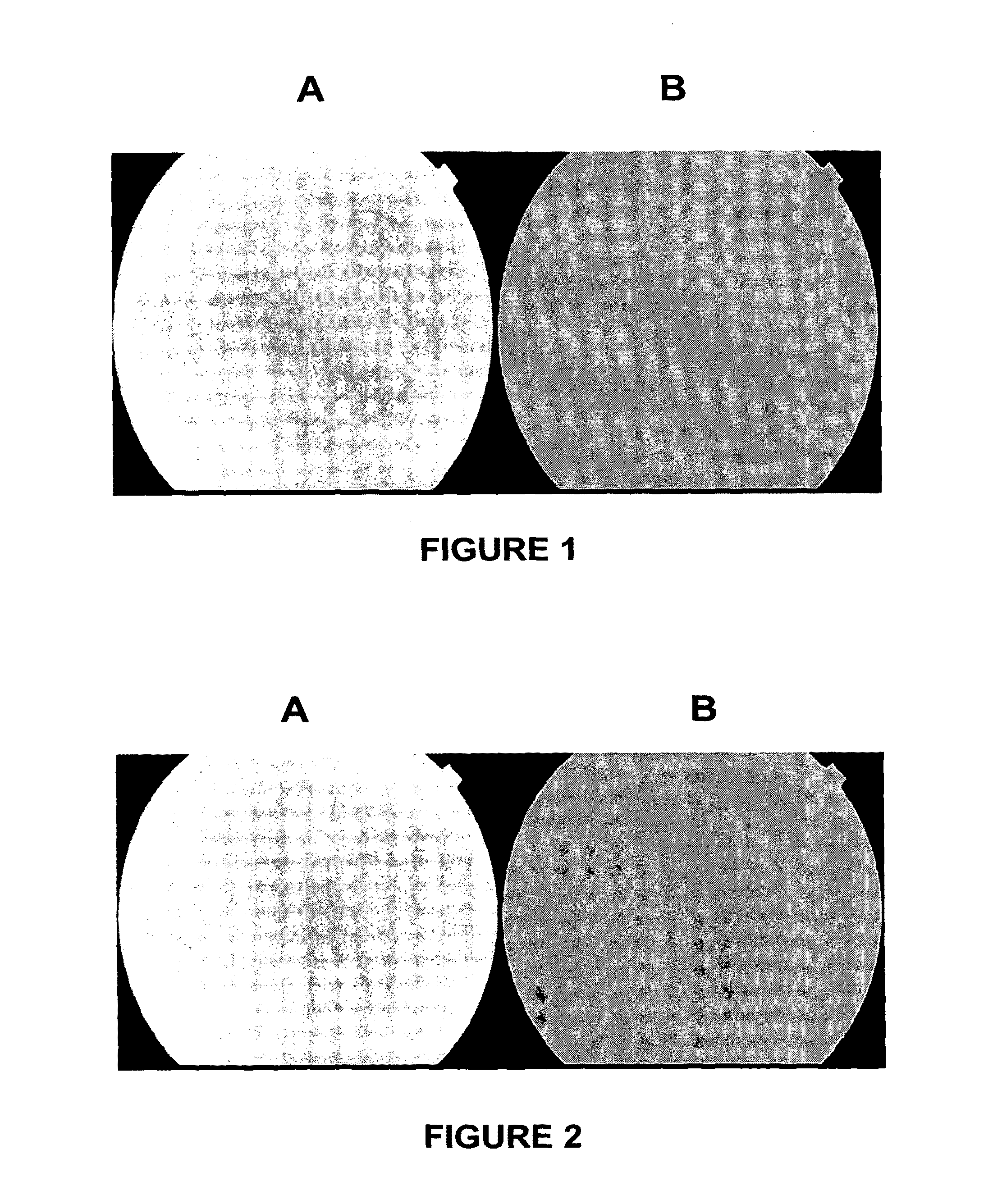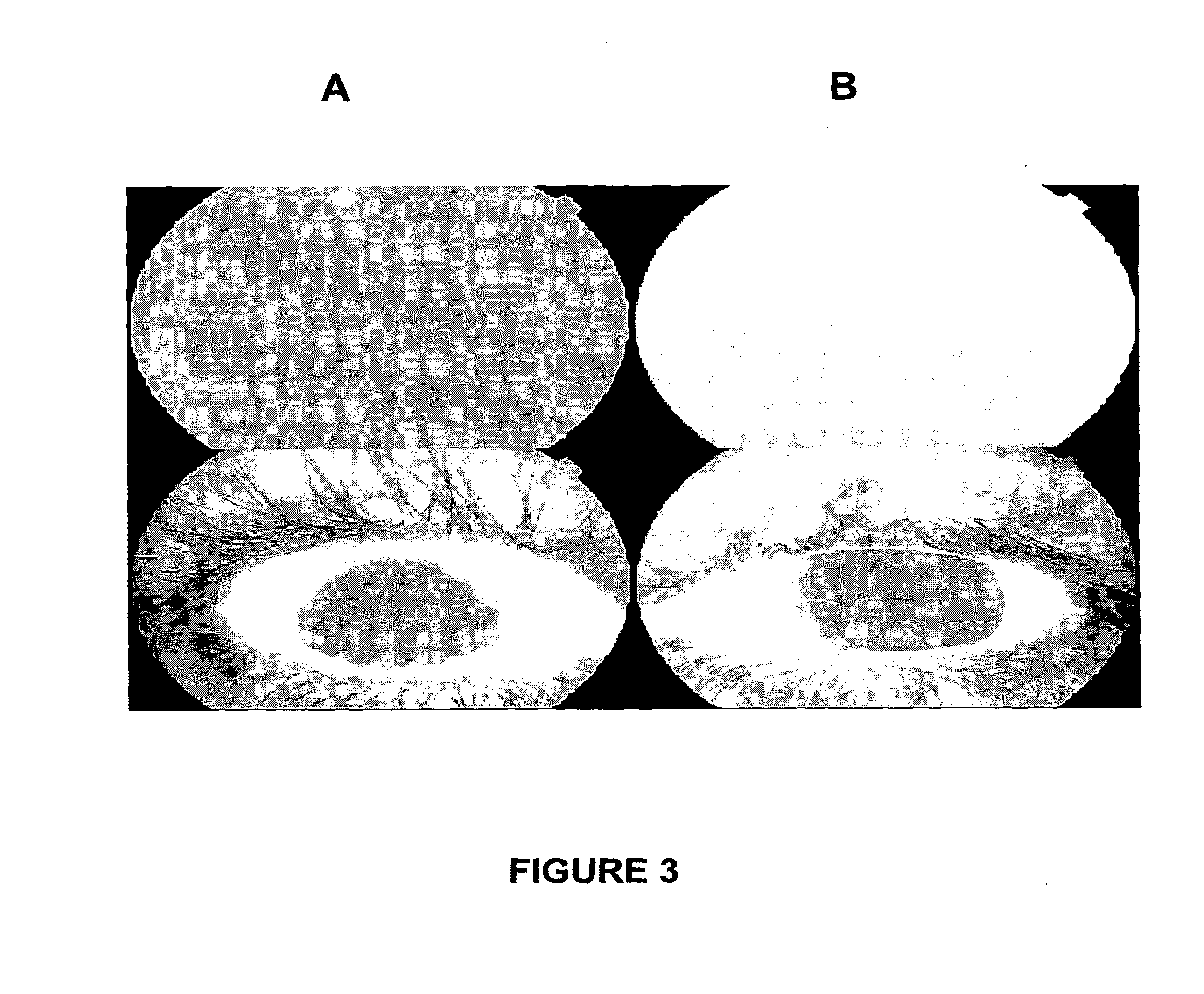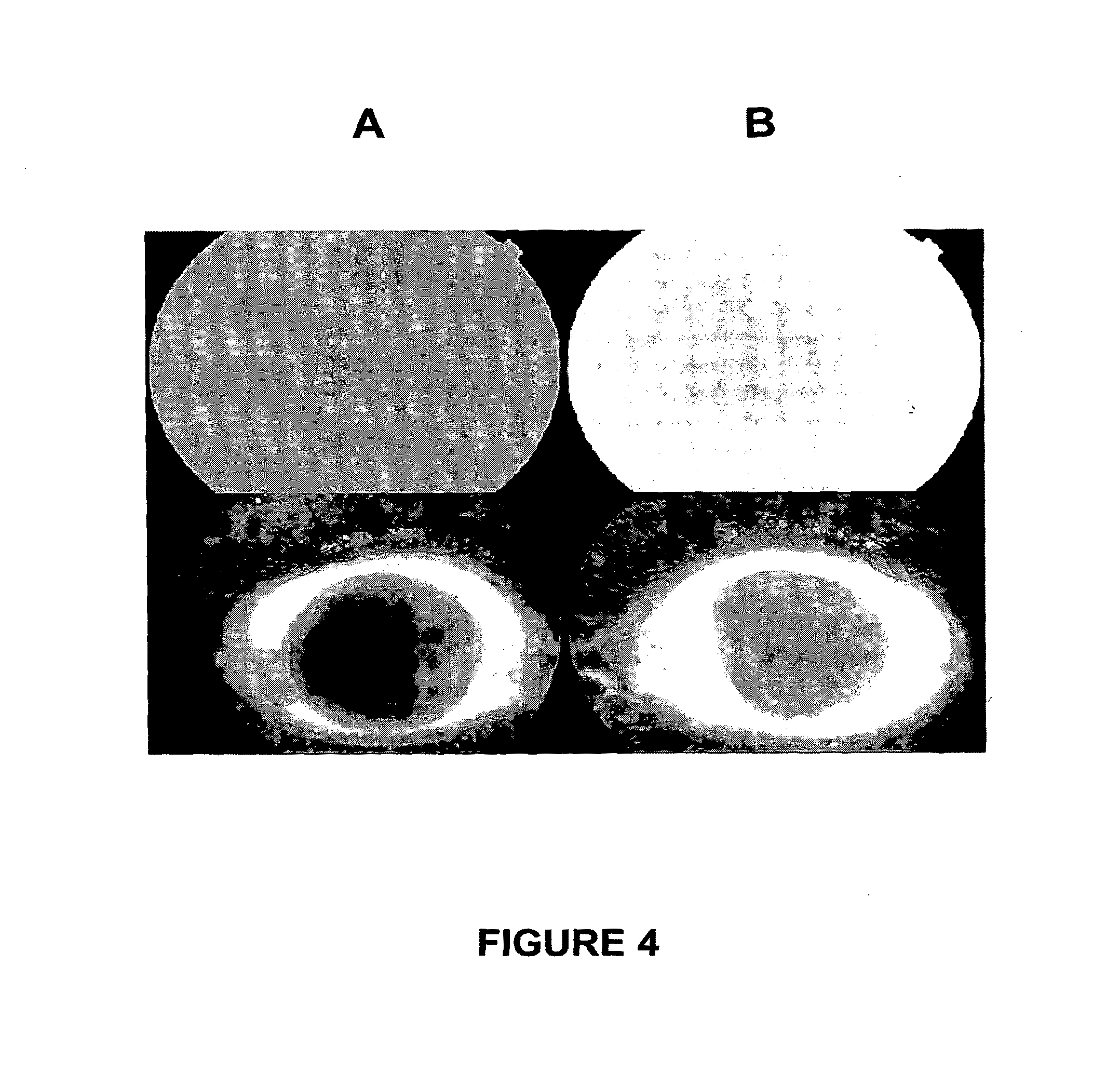Drug delivery to the anterior and posterior segments of the eye using eye drops
a technology of eye drops and eye drops, which is applied in the field of delivery of drugs to the anterior and posterior segments of the eye, can solve the problems of inability to treat various disorders and/or diseases of the chorio-retinal and/or optic nerve head disorders, the use of eye drops and ointments for years is not always effective, and the effect of rapid, simple and specific detection
- Summary
- Abstract
- Description
- Claims
- Application Information
AI Technical Summary
Benefits of technology
Problems solved by technology
Method used
Image
Examples
example 1
[0222]The experimental technique was based on ocular fundus fluorescence: Five patients were used in this study. Each patient received topically in one eye a drop of either apraclonidine or brimonidine or neosynephrine or timolol. Then every hour, the conjunctivae of the two eyes were exposed every hour to a 10% fluorescein solution. 8 hours later the fundus fluorescence in the two eyes was measured and analysed.
[0223]The fluorescence in the eye which received the drug carrier (brimonidine, apraclonidine, neosynephrine, or timolol) was stronger than in the eye receiving only fluorescein indicating that this drug carrier had enhanced the delivery of 10% fluorescein to the posterior segment (chorio-retina; optic nerve head). The following is a synopsis and results of the study undertaken:
First Case: Iopidine and Ocular Fundus
[0224]
Right eye:left eye:lopidine + fluoresceinfluorescein
[0225]The results of the fundus fluorescence are shown in FIG. 1. FIG. 1A is the result obtained using a...
example 2
[0235]Diabetic retinopathy is the leading cause of new blindness in individuals under 65 years of age. Diabetic retinopathy can be classified into non-proliferative diabetic retinopathy (NPDR) and proliferative diabetic retinopathy (PDR). The clinical features of NPDR include microaneurysms, intraretinal hemorrhages, hard exudates, nerve fiber layer infarcts or cotton wool exudates and intra retinal microvascular abnormalities (IRMA). The clinical picture of PDR includes the features from NPDR in addition to proliferating new vessels on the optic nerve head, retina or iris.
[0236]Diabetic macular oedema is a principal cause of visual loss in diabetic patients. Two examination techniques are very useful in evaluating diabetic retinopathy: fluorescein angiography and optical coherence tomography.
[0237]Fluorescein angiography is used to detect several of the retinal vascular abnormalities. The dye delineates structural vascular alterations, such as aneurysms or neova...
example 3
[0249]Central retinal vein occlusion (CRVO) is a common retinal vascular condition usually affecting people older then 50 years. Patients typically experience visual loss and present with dilated tortuous retinal veins and scattered intra-retinal hemorrhage in all four quadrants, cotton wool spots, optic disc swelling, and macular oedema can occur. Intra veinous fluorescein angiography shows areas of blocked fluorescence from the intra-retinal blood, staining of the vessel walls, a delayed arteriovenous phase, and nonperfused areas, and perifoveal leakage.
[0250]OCT detects macular oedema. Recent studies have shown the efficacy of intravitreal triancinolone (Aristocert®) injection in macular oedema secondary to CRVO. An anti-VEGF agent (Avastin®) when injected into the eye improved this condition.
[0251]12 patients, instead of injection, received topically either a corticosteroid (dexamethasone (Tobradex®) or prednisolone) or an anti-VEGF agent (Avastin®), associ...
PUM
| Property | Measurement | Unit |
|---|---|---|
| size | aaaaa | aaaaa |
| pKa | aaaaa | aaaaa |
| pKa | aaaaa | aaaaa |
Abstract
Description
Claims
Application Information
 Login to View More
Login to View More - R&D
- Intellectual Property
- Life Sciences
- Materials
- Tech Scout
- Unparalleled Data Quality
- Higher Quality Content
- 60% Fewer Hallucinations
Browse by: Latest US Patents, China's latest patents, Technical Efficacy Thesaurus, Application Domain, Technology Topic, Popular Technical Reports.
© 2025 PatSnap. All rights reserved.Legal|Privacy policy|Modern Slavery Act Transparency Statement|Sitemap|About US| Contact US: help@patsnap.com



